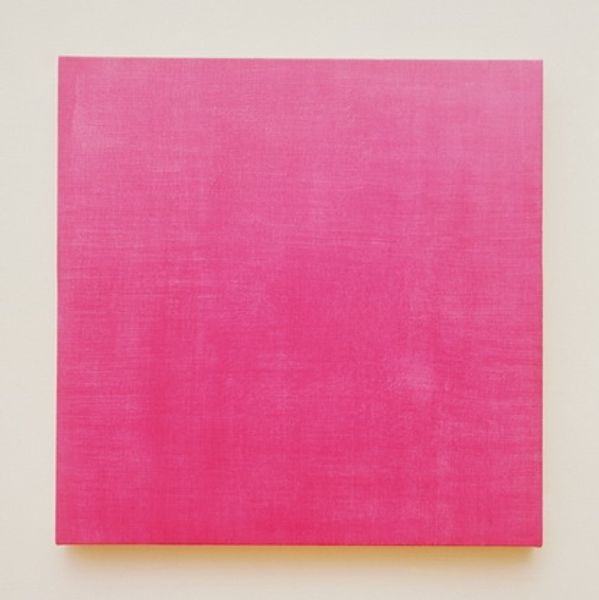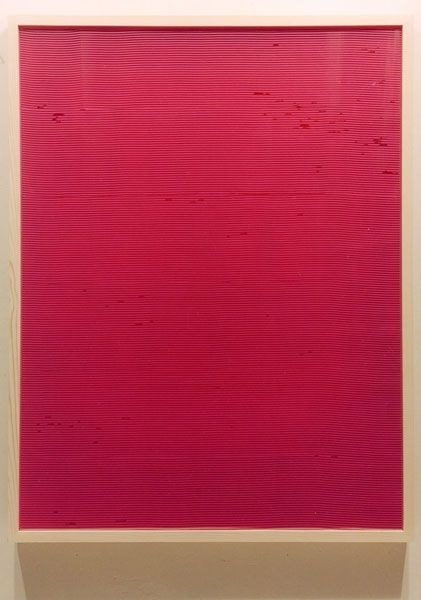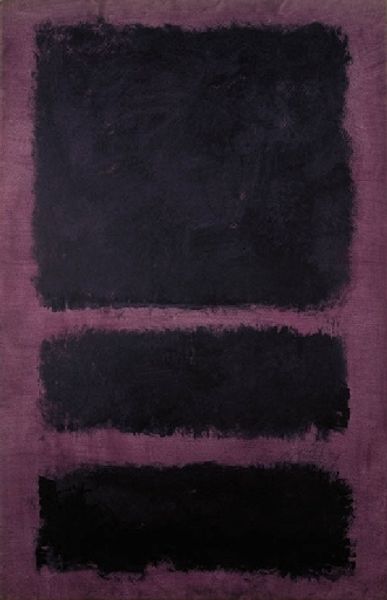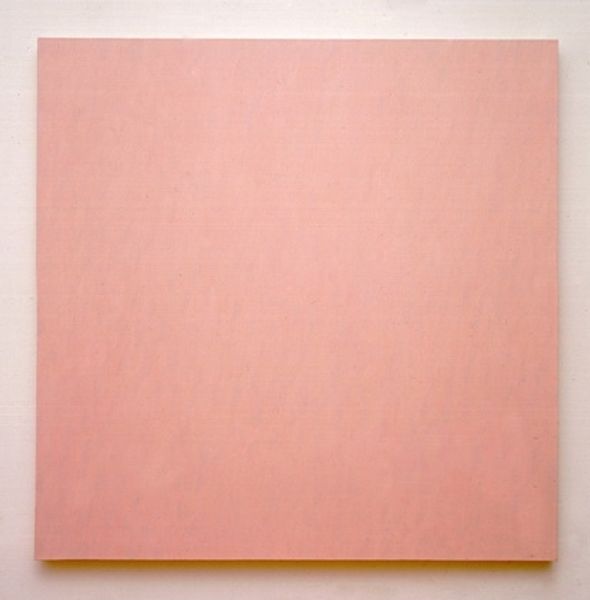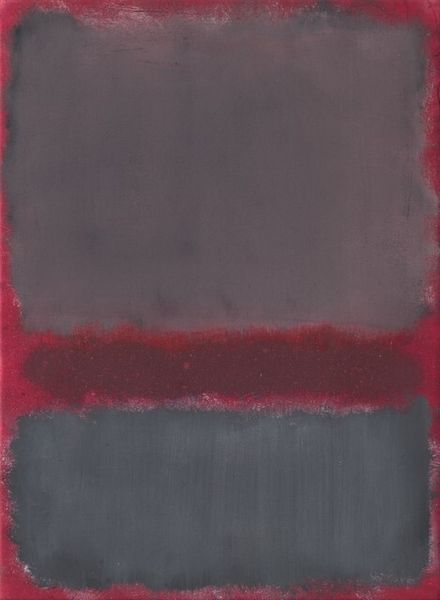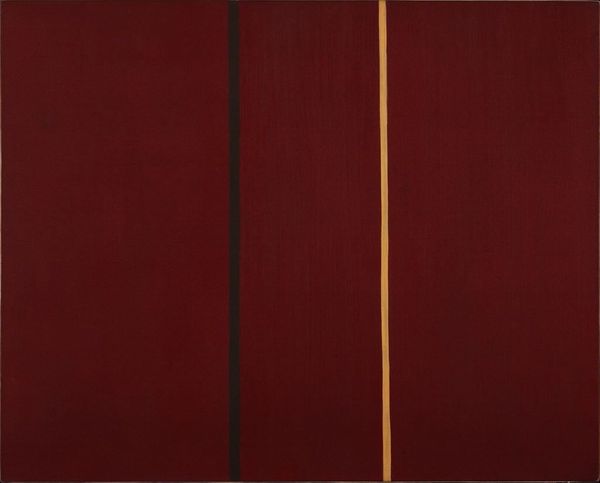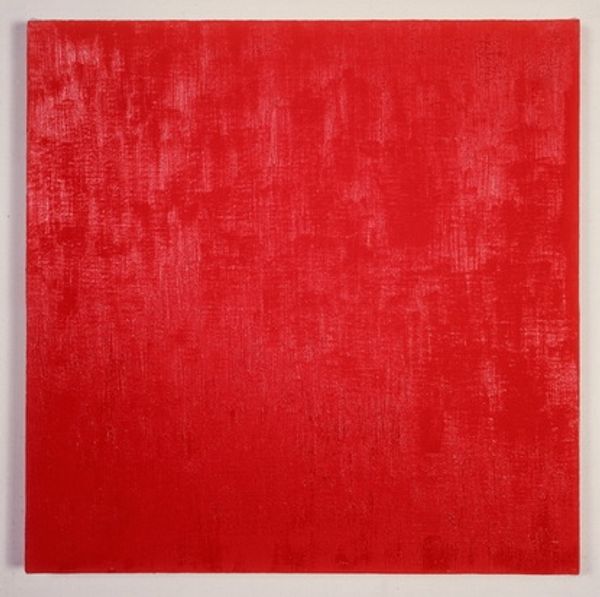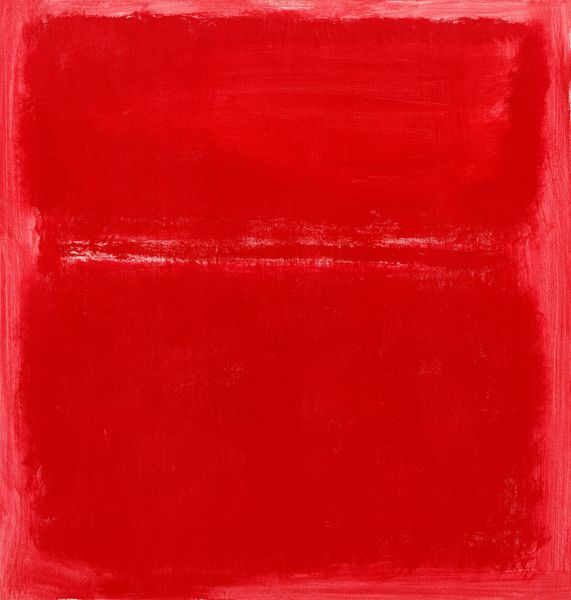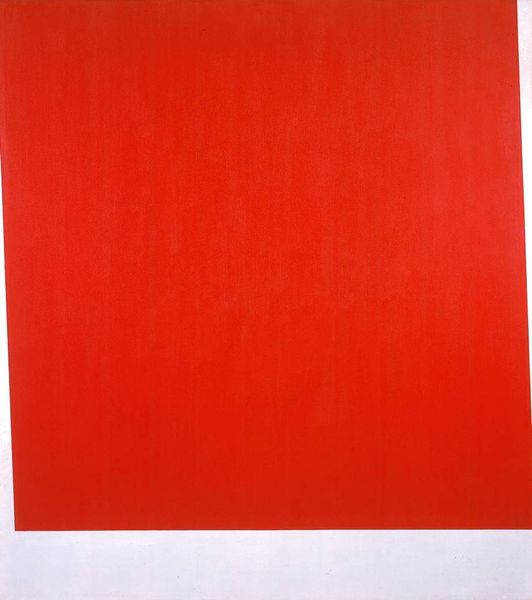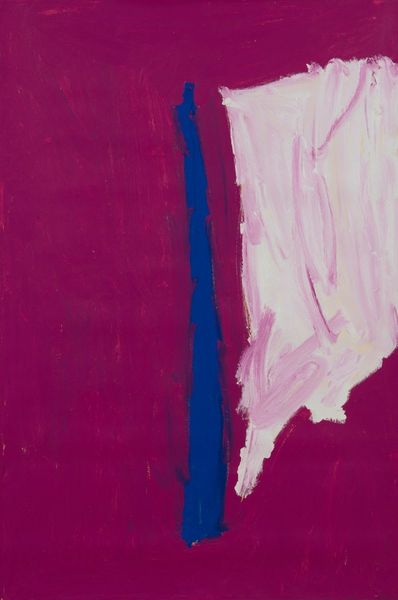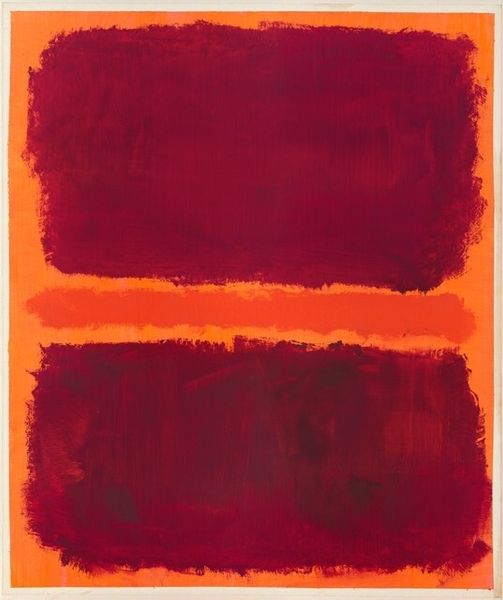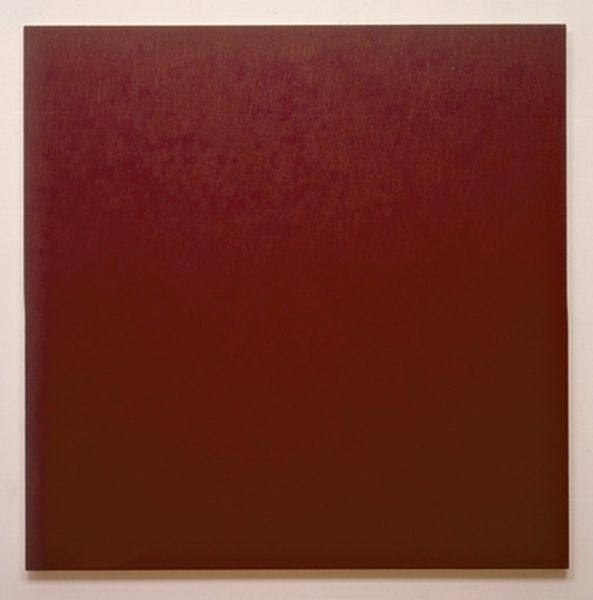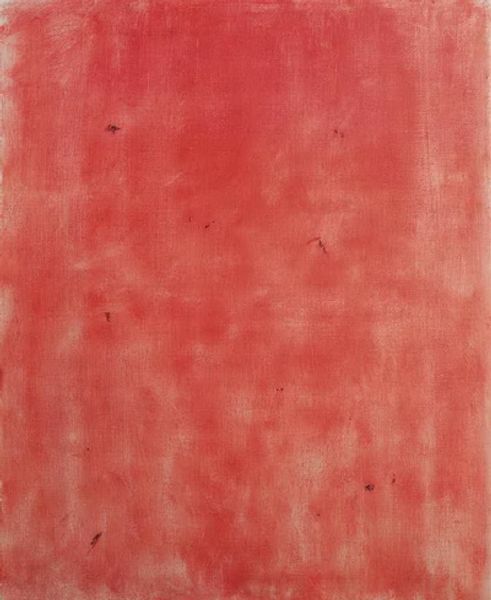
Copyright: Marcia Hafif,Fair Use
Curator: Here we have Marcia Hafif's "Double Glaze Painting: Cerulean Blue/Ruby Lake," completed in 2002. It’s an acrylic painting on canvas, and it stands as a strong example of her minimalist explorations with color and texture. Editor: Right, my first thought is... plums. It's this incredibly rich, almost edible purple. The surface isn't flat, is it? I see texture, like little bumps, making the color vibrate slightly. It's oddly tactile for a painting. Curator: Precisely. Hafif was deeply interested in the materiality of paint and how layers interacted. She often applied paint in thin, deliberate coats, building up the color and texture over time. The title, "Double Glaze," refers to this process, this careful accumulation of color. Think about it as a challenge to painting conventions that were striving toward pictorial illusion, or even expressionism. Editor: A challenge is right! It's so... reduced. You've stripped away everything but color and surface. Does she want us to just *feel* the color, rather than think about anything? Because I'm feeling something! A kind of intense quiet, like being in a purple room. It’s almost meditative, wouldn’t you say? Curator: Indeed, and the monochrome quality contributes to that stillness. Hafif, associated with the conceptual art movement, presents viewers with the pure, unadulterated experience of color and the physical properties of paint. The “Ruby Lake” aspect suggests historical pigment manufacturing—how colors get made available for the artist. There’s a whole political economy of color built into that reference, so, no, I don’t think she wanted us just to “feel.” Editor: Okay, you got me there! But even understanding the intellectual side doesn’t detract from the almost overpowering *presence* this colour has. It practically sucks the air out of the room. It also kind of rebels, this small rectangle…like some kid holding their breath and turning purple. Curator: A rebellious rectangle! I like that. Hafif's dedication to such focused, rigorous inquiry altered perceptions about minimalism itself, challenging the idea of art as primarily a visual representation of external things, rather offering internal states, social critiques, material investigations. Editor: So, it seems like this little “rebellious rectangle” gives us permission to slow down, and really *see*. And that's pretty great, whichever way you look at it. Curator: It certainly invites us to contemplate the seemingly simple in a way that yields surprising depths, wouldn’t you say?
Comments
No comments
Be the first to comment and join the conversation on the ultimate creative platform.
